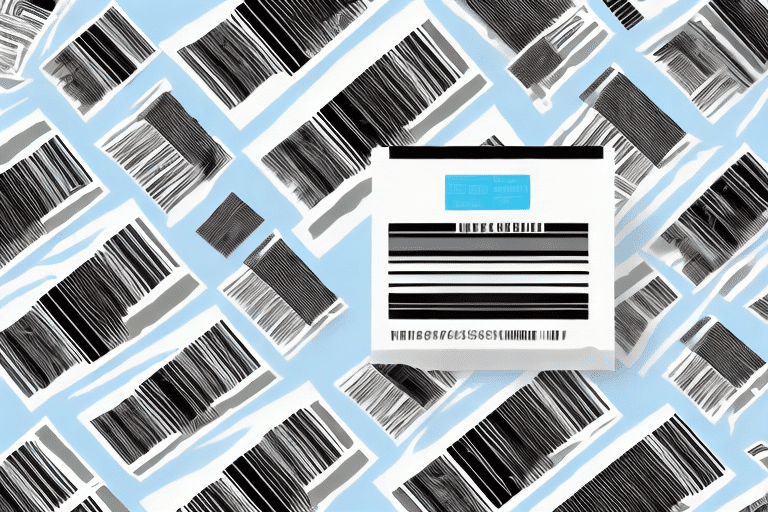Importance and Benefits of Shipping Barcodes
Shipping barcodes are a cornerstone of modern logistics, playing a pivotal role in ensuring that packages are delivered accurately and efficiently. In today's competitive business landscape, the ability to track and manage shipments in real-time is essential for maintaining customer satisfaction and operational efficiency.
Why Shipping Barcodes are Important for Your Business
Barcodes facilitate precise tracking of packages throughout the shipping process. They minimize human errors, expedite shipping times, and significantly reduce the chances of lost or misplaced items. By integrating barcodes with systems like inventory management, order fulfillment, and customer service, businesses can create a seamless and reliable shipping workflow. This integration not only enhances operational efficiency but also contributes to improved customer experiences and better business performance.
Benefits of Using Barcodes in Your Supply Chain Management
- Increased Accuracy and Efficiency: Automated scanning reduces manual entry errors and speeds up processing times.
- Cost Reduction: Minimizes the need for manual labor and decreases the likelihood of costly shipping mistakes.
- Enhanced Tracking and Visibility: Real-time tracking allows businesses and customers to monitor shipments at every stage.
- Improved Inventory Management: Accurate tracking ensures optimal stock levels and prevents overstocking or stockouts.
- Boosted Customer Satisfaction: Reliable shipping processes lead to timely deliveries and higher customer trust.
According to a Supply Chain Digital report, implementing barcode systems can reduce shipping errors by up to 30%, highlighting their significant impact on operational efficiency.
Types of Shipping Barcodes
Understanding the various types of shipping barcodes is crucial for selecting the right one that aligns with your business needs and industry standards. Each barcode type serves different purposes and offers unique advantages.
Commonly Used Barcode Types
- Universal Product Code (UPC): Widely used in retail, UPCs identify products and are essential for point-of-sale scanning.
- Code 128: Versatile and compact, Code 128 is used across multiple industries, including logistics and healthcare, for tracking and inventory management.
- Interleaved 2 of 5: Ideal for encoding numeric data, this barcode type is commonly used in warehousing and transportation.
Advanced Barcode Technologies
In addition to traditional 1D barcodes, 2D barcodes like QR codes and Data Matrix codes offer enhanced capabilities, including the ability to store more data and provide increased security. These advanced barcodes are becoming increasingly popular for their ability to integrate with mobile devices and sophisticated tracking systems.
For more information on barcode types and their applications, refer to the GS1 Barcode Standards.
Choosing and Implementing the Right Barcode
Selecting the appropriate barcode type is essential for optimizing your shipping processes. Factors such as package size, industry requirements, and the technology available should influence your decision.
Factors to Consider When Choosing a Barcode
- Package Size and Space: Smaller barcodes like Code 128 are suitable for limited space, while larger packages might accommodate more detailed barcodes.
- Industry Standards: Different industries may have specific barcode requirements; understanding these standards ensures compliance and compatibility.
- Scanning Technology: Ensure that your chosen barcode is compatible with the scanning equipment used by your shipping partners.
- Security Needs: For high-value or sensitive shipments, consider using 2D barcodes that offer enhanced security features.
Integrating Barcodes into Your E-commerce Platform
For e-commerce businesses, integrating barcodes can streamline inventory management and order fulfillment. Platforms like Shopify and WooCommerce offer built-in barcode integration features, allowing seamless synchronization between your online store and shipping operations.
Integrating barcodes with your e-commerce platform can lead to a 25% increase in order fulfillment rates, as reported by Business.com.
Creating and Managing Barcodes
Generating and managing barcode labels is a straightforward process, but it requires adherence to industry standards to ensure accuracy and reliability.
How to Create a Barcode Label for Your Package
To create a barcode label, use specialized barcode software or online generators. These tools allow you to input your package information and generate a corresponding barcode image. Ensure that the barcode adheres to the required specifications, such as size and encoding format, to maintain its readability.
Step-by-Step Guide to Generating a Shipping Barcode
- Select the Appropriate Barcode Type: Choose a barcode that fits your package size and industry needs.
- Use Reliable Barcode Software: Utilize reputable software or online generators to create your barcode label.
- Test for Accuracy: Before mass printing, test the barcode to ensure it is scannable and accurately represents the intended data.
- Print and Attach: Use high-quality printers to produce clear barcode labels and securely attach them to your packages.
- Monitor and Track: Use the barcode in conjunction with your shipping carrier’s tracking system to monitor your shipments in real-time.
How to Print Your Shipping Label with the Barcode
Printing barcode labels requires high-resolution printers to ensure clarity and scannability. It is advisable to use thermal label printers for their precision and durability. Additionally, consult your shipping carrier’s guidelines to adhere to their specific requirements regarding label placement and sizing.
For further guidance, refer to the UPS Barcode Guidelines.
Best Practices for Barcode Usage
Implementing barcodes effectively requires adherence to best practices that ensure their accuracy and longevity throughout the shipping process.
Tips for Ensuring Barcode Accuracy and Legibility
- Select the Right Barcode Type: Choose a barcode that matches your operational needs and industry standards.
- Proper Placement: Avoid placing barcodes near folds, creases, or package edges to prevent damage and ensure easy scanning.
- Secure Attachment: Ensure that barcode labels are firmly attached to prevent peeling or shifting during transit.
- High-Quality Printing: Use printers that produce clear and sharp barcode images to maintain scannability.
- Regular Testing: Periodically scan barcodes to verify their readability and address any issues promptly.
Best Practices for Using Barcodes in Your Shipping Process
- Invest in Reliable Software: Utilize reputable barcode generation and management software to maintain data integrity.
- Provide Staff Training: Educate your team on proper barcode handling and scanning techniques to minimize errors.
- Maintain Equipment: Regularly service your scanning equipment to ensure optimal performance.
- Update Your Database: Keep your barcode database up-to-date to prevent discrepancies and improve tracking accuracy.
Common Issues and Troubleshooting
Despite their efficiency, barcodes can encounter issues that disrupt the shipping process. Understanding common problems and their solutions is essential for maintaining smooth operations.
Common Barcode Generation Mistakes to Avoid
- Incorrect Barcode Type: Using an unsuitable barcode type can lead to scanning issues and data inaccuracies.
- Poor Placement: Placing barcodes in hard-to-reach or damaged areas can impede scanning efforts.
- Low-Quality Printing: Fuzzy or unclear barcodes are difficult to scan and can result in processing delays.
- Lack of Testing: Failing to test barcodes before shipping can allow errors to go unnoticed until they cause significant issues.
How to Troubleshoot Common Barcode Issues
- Verify Specifications: Ensure that your barcodes meet the necessary industry standards and encoding requirements.
- Use High-Quality Scanners: Invest in reliable scanning equipment to accurately read barcode data.
- Conduct Regular Testing: Implement routine checks to confirm that barcodes are scannable and correctly formatted.
- Secure Barcode Attachment: Make sure that barcodes are firmly affixed and protected from damage during transit.
- Consult Experts: If persistent issues arise, seeking advice from a barcode specialist can provide tailored solutions.
Future Trends and Case Studies
The landscape of barcoding technology is continually evolving, driven by advancements in digital technologies and increasing demands for efficiency in the shipping industry.
Future of Barcoding Technology in the Shipping Industry
Emerging technologies such as Artificial Intelligence (AI), machine learning, and the Internet of Things (IoT) are set to revolutionize barcode systems. These innovations will enhance automation, increase data accuracy, and provide deeper insights into shipping processes. Additionally, the integration of 2D barcodes with mobile devices will facilitate more dynamic and interactive tracking solutions.
Case Studies: Success Stories of Businesses Using Barcoding Technology
- ABC Company: By implementing Code 128 barcodes, ABC Company reduced their shipping times by 30% and achieved a 99.9% accuracy rate.
- XYZ Inc.: Integrating barcodes into their e-commerce platform led to a 25% increase in order fulfillment rates and a 15% reduction in shipping costs.
- PQR Logistics: Utilizing Interleaved 2 of 5 barcodes enabled PQR Logistics to accurately track international shipments, resulting in higher customer satisfaction levels.
These case studies demonstrate the tangible benefits of adopting barcode technology, highlighting improvements in efficiency, cost savings, and customer satisfaction.
Conclusion
Shipping barcodes are a fundamental component of an efficient and reliable shipping process. By understanding their importance, selecting the right type, and adhering to best practices, businesses can enhance their logistics operations, reduce costs, and improve customer satisfaction. As technology continues to advance, the role of barcodes in supply chain management will only become more integral, offering even greater opportunities for optimization and innovation.






















